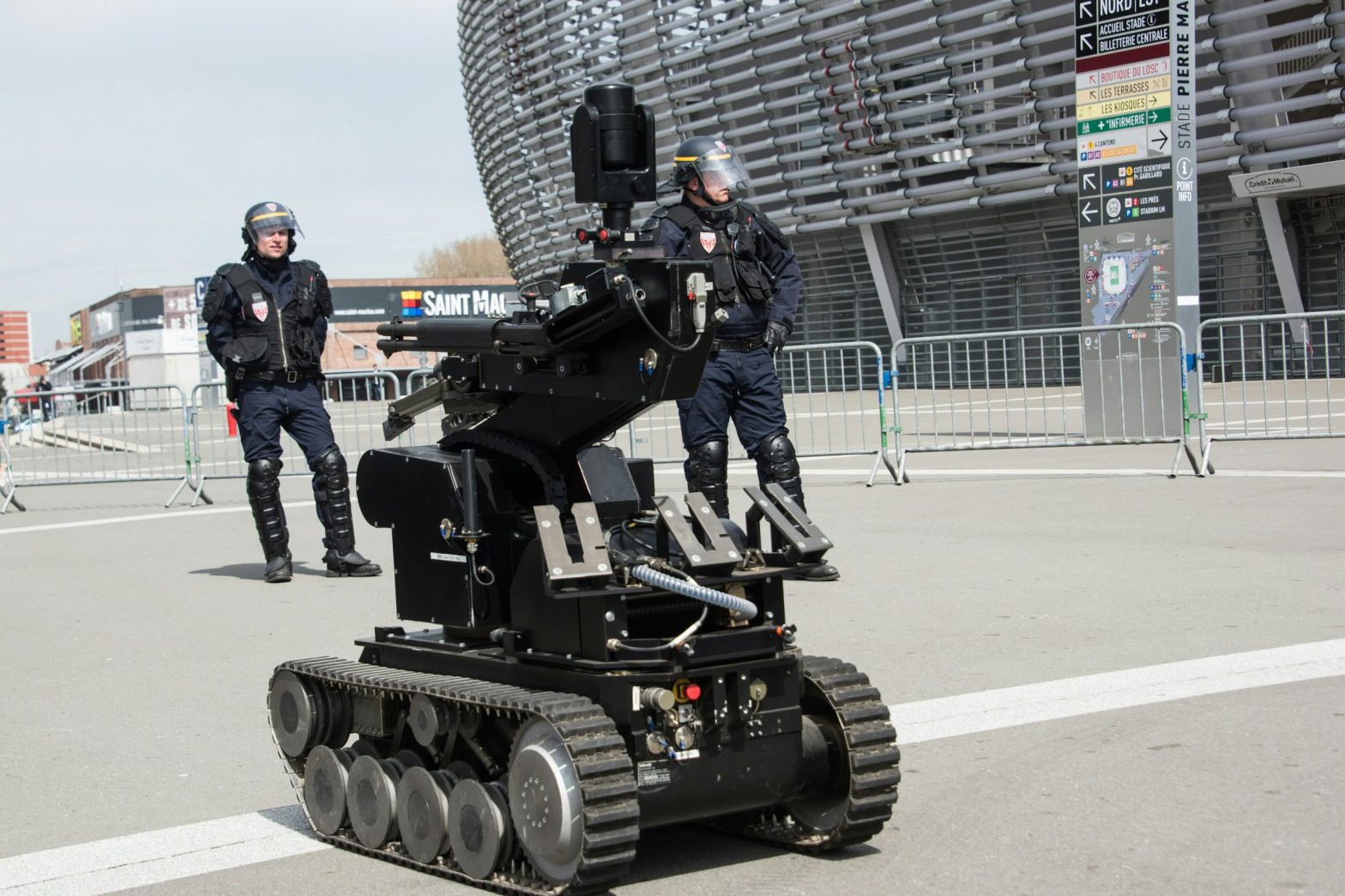/
Robots can be armed with explosives to “contact, incapacitate, or disorient violent, armed, or dangerous suspect” in “extreme circumstances, says the SFPD
:format(webp)/cdn.vox-cdn.com/uploads/chorus_asset/file/24243953/523140816.jpg)
San Francisco’s police will be allowed to use remote-controlled robots to kill suspects. The city’s board of supervisors last night approved a controversial policy that lets police robots “be used as a deadly force option when risk of loss of life to members of the public or officers is imminent and outweighs any other force option available.”
The San Francisco Police Department (SFPD) said it does not own any pre-armed robots and has no plans to arm its current machines, reports Sky News. As SFPD spokesperson Allison Maxie explained in a statement, the department’s robots can now be equipped with explosives “to contact, incapacitate, or disorient violent, armed, or dangerous suspect” in “extreme circumstances to save or prevent further loss of innocent lives.”
Currently, the SFPD owns 17 robots, 12 of which are operational. The machines can broadly be divided into two categories: large and medium-size tracked robots used to remotely examine or detonate explosives (like the Remotec F6A and Qinetiq Talon) and smaller bots designed to be thrown into target areas for reconnaissance and surveillance (like the iRobot FirstLook and Recon Robotics Throwbot). All of the robots owned by the SFPD are designed to be primarily operated by humans and have limited autonomous functionality.
:format(webp)/cdn.vox-cdn.com/uploads/chorus_asset/file/24224426/SWORDS_robot.jpeg)
Police departments in the US have already used remote-controlled robots to kill suspects. The first such incident is believed to have occurred in 2016, when police in Dallas used a bomb disposal robot to kill a sniper who had shot and killed five officers at a rally. At the time, the action was praised by some for swiftly ending an hours-long standoff, and criticized by others for effectively allowing the police to execute a suspect without exhausting alternative options. At the time, Dallas police chief David Brown said officers “saw no other option but to use our bomb robot and place a device on its extension for it to detonate where the suspect was.”
In San Francisco, AP News reports that the policy was debated for two hours before being approved eight votes to three. One proponent, supervisor Rafael Mandelman, said those arguing against the policy may “start looking to the public like they are anti-police.” Board president Shamann Walton, meanwhile, who voted against the proposal, responded that he was not anti-police but “pro people of color.”
Said Walton, “We continuously are being asked to do things in the name of increasing weaponry and opportunities for negative interaction between the police department and people of color. This is just one of those things.”
The proposal was criticized by numerous civil rights groups. The Electronic Frontier Foundation (EFF) said it was typical of police-military mission creep, the process by which hardware developed for use in war zones is deployed against civilians. “We’ve already seen this with military-grade Predator drones flying over protests, and police buzzing by the window of an activist’s home with drones,” said the EFF’s Matthew Guariglia in a blog post.
Elsewhere in the US, police departments have rejected similar proposals. Oakland’s police department initially approved the use of robots to remotely kill suspects, but later reversed its decision without explanation. The policy had been criticized, with a report from The Intercept revealing discussion by officers about the possibility of arming a robot with a shotgun shell.
